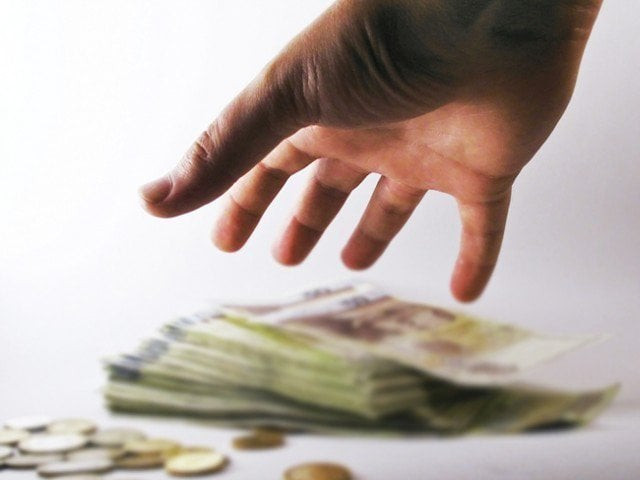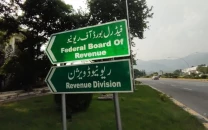Centre, provinces spend just Rs164b on development
As per budgetary limit, they should have spent Rs322 billion in first quarter

PHOTO: FILE
The consolidated federal and provincial fiscal operations summary, released by the Ministry of Finance last week, showed that the provincial governments preferred to save their allocated budgets instead of spending to stimulate economic growth.
The four provincial governments cumulatively spent Rs70.6 billion or 7.7% of their annual development plans of Rs912 billion, according to the Ministry of Finance. As compared to the first quarter of the last fiscal year, the provincial development spending was higher by 21% in the current fiscal year.
However, last year’s first-quarter spending was low because the new government came into power in August. The federal government also spent only Rs93.6 billion or 13.3% of the annual Public Sector Development Programme (PSDP).
Sindh govt, WB approve new development projects worth $1.93b
As per the quarterly budgetary limits, all the five governments - the centre and four provinces - should have spent Rs322 billion in the first quarter as against the total national development budget of Rs1.613 trillion for fiscal year 2019-20. But all the governments cumulatively spent Rs158 billion less than their budgetary limits.
The low development spending by the federal and provincial governments helped the federal finance ministry to meet a key target set by the International Monetary Fund (IMF) aimed at restricting the primary budget deficit.
The IMF had set the primary budget deficit target at Rs102 billion or 0.23% of GDP for the July-September quarter. However, the government overshot the target and showed a primary surplus of Rs286 billion or 0.7% of GDP.
Key reasons behind the primary budget surplus turned out to be low development spending, a higher profit showed by the State Bank of Pakistan, one-off telecom licence fee payment and a higher petroleum levy on petroleum products.
But this has stifled economic growth and both the IMF and Prime Minister Imran Khan now desire to enhance development spending in the remaining period of the current fiscal year.
In order to limit the Ministry of Finance’s control over development spending, the federal government has already revised the ways and means limits last month.
According to the revised structure, 20% of funds will be released for expenditure on each project of the PSDP in the first quarter, 30% each will be spent in the second and third quarters and 20% will be disbursed in the fourth quarter against the budget allocation for fiscal year 2019-20.
No ways and means clearance would be required from the Finance Division for the first three quarters in respect of PSDP releases, as authorised by the Ministry of Planning, Development and Reform, while remaining within the prescribed limit, according to the new instructions issued last month.
Compared with a meagre development spending of Rs70.6 billion, the four provincial governments showed a cash surplus of Rs202 billion in the July-September quarter. This helped the federal government to meet the IMF condition.
Against the annual development plan of Rs350 billion, the government of Punjab spent just Rs42.7 billion or 12.2% of its annual budget, showed the Ministry of Finance summary. The provincial government showed a cash surplus of Rs75.4 billion in the first quarter.
Overall, Punjab’s revenues decreased 6% to Rs365.8 billion in the quarter, mainly because of less transfers by the federal government. The provincial government managed to increase its non-tax revenues on the back of higher profit from hydroelectric power and irrigation revenues.
Revenues from irrigation increased from Rs7.8 billion to Rs17 billion in the quarter under review.
The Sindh government spent just Rs15.8 billion or 5.4% of its annual development plan in the first quarter. The spending was nearly one-fifth higher than the last fiscal year.
The Sindh government’s total revenues decreased by 5% to Rs198.5 billion. It showed Rs35.5 billion in cash surplus, according to the finance ministry.
Eight projects worth Rs20b approved by government
The Khyber-Pakhtunkhwa (K-P) government spent only Rs8.4 billion on development in the first quarter, which was equal to 5.5% of its annual budget. The spending was lower by 22% as compared to the same period of last fiscal year.
The summary showed that the Pakistan Tehreek-e-Insaf (PTI)’s provincial government in K-P recorded a cash surplus of Rs53.7 billion aimed at helping the federal government to meet its IMF target.
Overall, the K-P government’s total revenues increased over 20% to Rs140.8 billion despite fewer receipts from the federal government under the National Finance Commission (NFC) award. One of the reasons behind higher receipts was the income of Rs5.5 billion from sale of hydroelectric power.
The Balochistan government spent Rs3.7 billion or 2.9% of the annual development budget. It also showed Rs37.3 billion in cash surplus in the first quarter. The provincial government’s revenues increased by 15% to Rs86 billion on the back of higher NFC transfers.
Published in The Express Tribune, December 3rd, 2019.
Like Business on Facebook, follow @TribuneBiz on Twitter to stay informed and join in the conversation.


















COMMENTS
Comments are moderated and generally will be posted if they are on-topic and not abusive.
For more information, please see our Comments FAQ